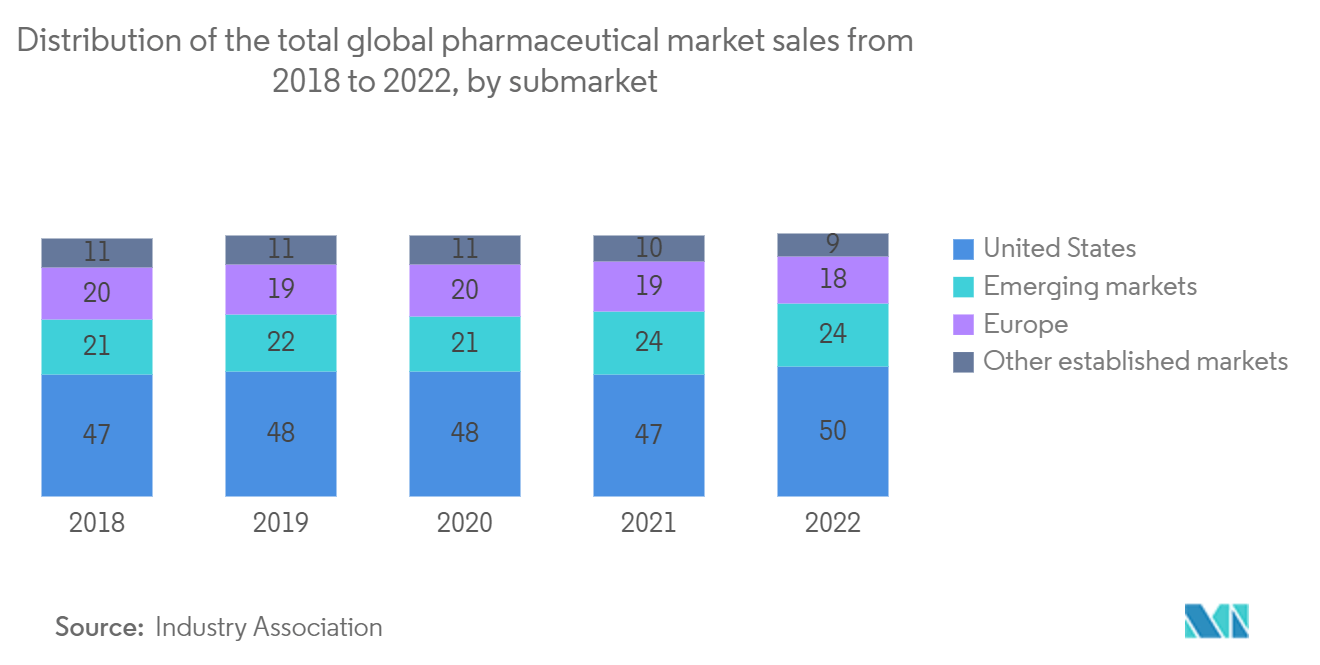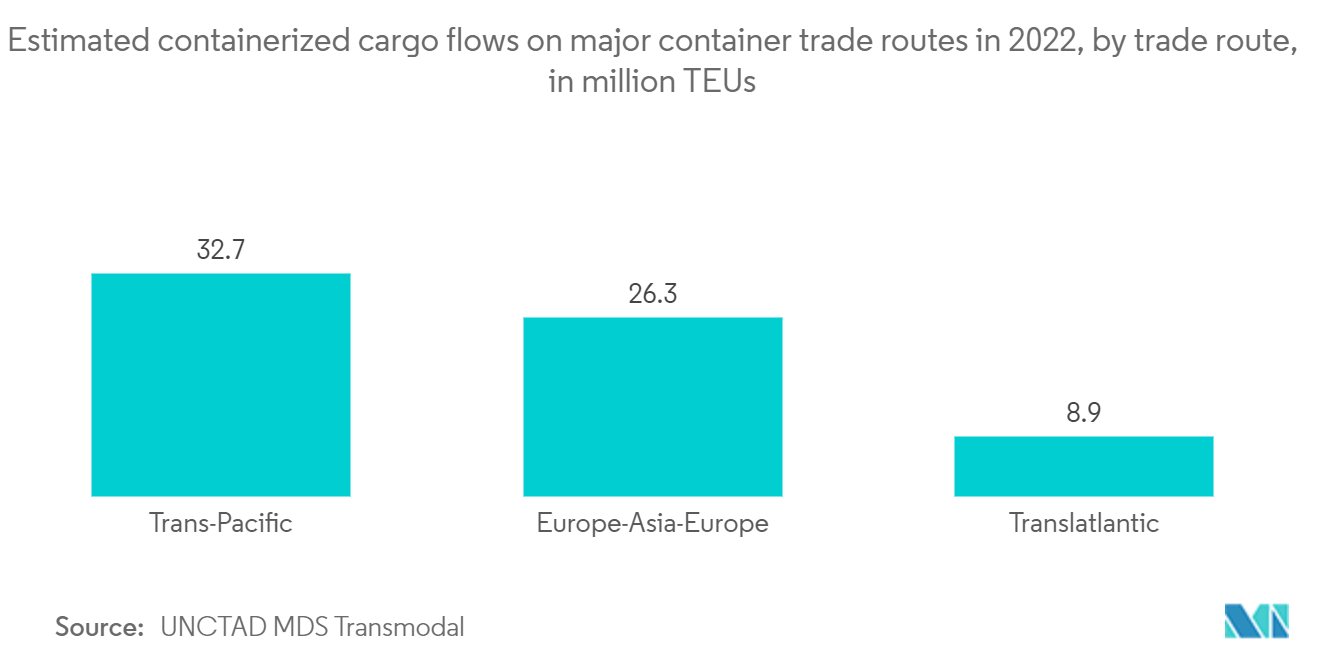Market Trends of Refrigerated Container Shipping Industry
Rising demand for pharmaceutical market
- The pharmaceutical industry is one of the most important. It satisfies about 62% of worldwide vaccination demand and is the largest global provider of generic pharmaceuticals, accounting for 20% of total global supply by volume. Although this industry was established for millennia, it saw a substantial expansion in recent years.
- Technological developments are a major trend that is gaining traction in the pharmaceutical logistics industry. To maintain their market position, major pharmaceutical logistics businesses are developing new technologies such as cloud-based supply chain operations, IoT technology, and others.
- Cardinal Health was awarded a contract worth USD 57.8 million in April 2022 for the storage and distribution of 80,000 pallets of personal protective equipment (PPE). It was to support the Strategic National Stockpile (SNS), a division of the US Department of Health and Human Services (HHS).
- According to recent research, there was a 50% increase in the third quarter of 2021 based on an analysis of 15 reefer trade routes, while dry container freight charges more than quadrupled in 2021. In addition, under the company's Dalreftrans subsidiary expansion strategy, FESCO Transportation Group intended to extend its fleet of reefer containers to 4,000 units by the end of summer 2022 in July 2022. Thus, an increase in the need for pharmaceutical product transportation and logistics is driving the use of reefer containers.

Increase in number of trade routes
- A trade route is a logistical network of roads and stoppages used for commercial goods transit. It enables commodities to prosper in distant marketplaces. One trade route includes long-distance arteries that may be linked to smaller networks of economic and non-commercial transportation routes. As the amount of marine traffic and the number of trade routes continue to grow, reefer containers are projected to be in high demand.
- Supported transportation method, the seaways category, holds the largest share of the reefer container market and is projected to maintain its dominance in the next years. By 2024, seaborne refrigerated trade will total 124 million tonnes, reflecting a 3.7% annual growth rate. Dry cargo, on the other hand, will only rise at a 2.2% yearly rate, owing to the "broader resilience" of the food supply chain.
- As various shocks weigh on the global economy, global commerce lost impetus in the second half of 2022 and will remain weak in 2023. WTO experts expected a 3.5% growth in global goods trade volumes in 2022, up from 3.0% in April 2022. However, they predicted a 1.0% growth in 2023, a significant decrease from the earlier prediction of 3.4%.
- The growing popularity of reefer logistics is due not just to economic advances in so-called developing nations but also to changes in the behavior of established markets. Plant-based diets, for example, grew in popularity, and goods such as avocados are exported from Latin America to Europe, China, and North America. This shift generates a need for customized logistical solutions. Reefer containers are the solution.


